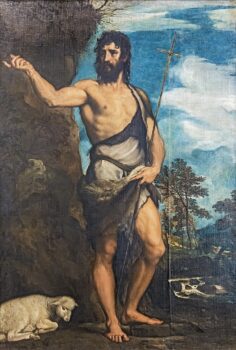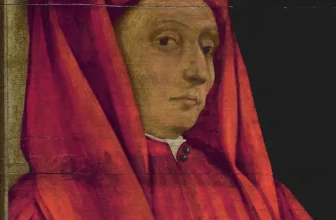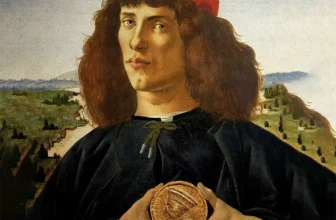The Legacy and Mysteries of Saint John the Baptist
Saint John the Baptist was one of the most revered prophets in history, known for his unwavering commitment to truth and righteousness. His role in preparing the way for Jesus Christ made him a central figure in the Gospels. However, his fearless preaching and dedication to God’s message ultimately led to his punishment and tragic execution. The story of his downfall is one of political intrigue, moral conviction, and the consequences of speaking truth to power.
John’s Mission and Outspoken Preaching
John the Baptist was a fiery preacher who lived in the wilderness, wearing camel’s hair and surviving on locusts and wild honey. He baptized people in the Jordan River, calling for repentance and spiritual renewal. His most significant act was baptizing Jesus, acknowledging Him as the Messiah.
John’s teachings were direct and often harsh, condemning sin wherever he saw it. He was not afraid to call out corruption and immorality, even among powerful figures. His fearless nature made him many enemies, particularly among the ruling elites.
The Conflict with Herod Antipas
One of the most defining moments of John’s ministry was his outspoken criticism of King Herod Antipas, the ruler of Galilee. Herod had unlawfully taken his brother Philip’s wife, Herodias, as his own. This marriage was not only scandalous but also a direct violation of Jewish law. John the Baptist publicly denounced Herod’s actions, declaring that it was sinful for him to be with his brother’s wife.
Herodias, furious at John’s condemnation, sought revenge. She saw John as a threat to her position and influence, and she wanted him silenced. Although Herod himself was troubled by John’s words, he was also afraid of him. He knew that John was widely respected as a prophet and feared public backlash if he acted against him.
John’s Imprisonment and Herod’s Dilemma
Despite his fears, Herod eventually arrested John and imprisoned him in the fortress of Machaerus. However, he did not immediately execute him. The Gospel of Mark (6:20) states that Herod actually liked listening to John, even though his words disturbed him. This inner conflict kept John alive for some time.
Herodias, however, was relentless in her desire to see John dead. She finally found her opportunity during Herod’s lavish birthday feast.
The Deadly Request
During the banquet, Herodias’s daughter, Salome, performed a dance that greatly pleased Herod and his guests. Overcome with delight, Herod made a reckless promise: he would give her anything she asked for, up to half his kingdom.
Influenced by her mother, Salome asked for the head of John the Baptist on a platter. Herod was horrified by the request, but he had publicly sworn an oath. To break it would damage his reputation. Unwilling to lose face, he reluctantly ordered John’s execution.
Who Was Saint John the Baptist Known For
Saint John the Baptist is one of the most significant figures in Christianity, recognized as a prophet and the forerunner of Jesus Christ. His primary role was to prepare the way for the Messiah, calling people to repentance and baptizing them in the Jordan River. He is renowned for his ascetic lifestyle, powerful preaching, and unwavering commitment to his divine mission.
John’s importance is evident in all four Gospels, where he is depicted as the voice crying in the wilderness, fulfilling the prophecy of Isaiah. His baptism of Jesus marked a pivotal moment in Christian history, symbolizing the beginning of Christ’s ministry. His message was clear: repent, for the kingdom of heaven is near. His influence was so profound that even after his death, he remained a revered figure, inspiring followers and being recognized as a saint by the Church.
What Happened to Saint John the Baptist?
Saint John the Baptist met a tragic fate at the hands of King Herod Antipas. According to biblical accounts, John openly criticized Herod for marrying Herodias, his brother’s wife, which was unlawful under Jewish law. Herodias harbored deep resentment against John and sought revenge.
During a lavish banquet, Herod’s stepdaughter, Salome, performed a dance that so delighted Herod that he rashly promised to grant her anything she wished. Urged by her mother, Salome asked for the head of John the Baptist on a platter. Though Herod was reluctant, he had John executed to fulfill his oath. John’s beheading remains one of the most poignant martyrdoms in Christian history.
Why Was Saint John Banished?
While the Bible does not explicitly mention Saint John the Baptist being banished, historical traditions suggest that he was imprisoned before his execution. His condemnation of Herod’s marriage made him a political and religious threat. Herod had him arrested and imprisoned in the fortress of Machaerus, located near the Dead Sea. Some traditions suggest that his imprisonment was a form of exile, as it removed him from public life and his followers.
His time in prison, however, did not silence him. He continued to question and seek confirmation of Jesus’ role as the Messiah, even sending his disciples to inquire whether Jesus was truly the one they had been expecting. Jesus affirmed John’s significance, stating that among those born of women, none was greater than John the Baptist.
What Was Unusual About John the Baptist?
Saint John the Baptist was an extraordinary figure with many unusual traits that set him apart:
- His Birth: John was born to elderly parents, Zechariah and Elizabeth, who were previously childless. His birth was foretold by the angel Gabriel, making it a miraculous event.
- His Lifestyle: John lived in the wilderness, wore clothing made of camel’s hair, and survived on a diet of locusts and wild honey. His ascetic way of life symbolized his complete devotion to God.
- His Baptism Ritual: While baptism was practiced in Jewish purification rites, John’s baptism was unique as it emphasized repentance and preparation for the coming of the Messiah.
- His Role as the Forerunner: Unlike other prophets, John had the distinct role of preparing the way for Christ, which Jesus himself acknowledged.
- His Martyrdom: Unlike most prophets who died at the hands of their own people, John was executed at the request of a vengeful queen, making his death both politically and personally motivated.
Where Is Saint John the Baptist Painting by Titian?
One of the most famous paintings of Saint John the Baptist was created by the Venetian Renaissance master Titian. This artwork captures the saint in a contemplative pose, reflecting his deep spirituality and rugged existence.
Titian’s painting of Saint John the Baptist can be found in the Galleria dell’Accademia in Venice, Italy. The masterpiece portrays John in a dramatic and emotional light, emphasizing his role as a prophet and martyr. The painting showcases Titian’s signature use of rich colors, dynamic composition, and masterful play of light and shadow, making it a remarkable depiction of the saint.
Other notable depictions of John the Baptist by Titian can be found in various collections worldwide, including museums and private collections. His interpretation of John remains one of the most evocative representations in Renaissance art, capturing both the saint’s solemnity and his passionate devotion to God.
Saint John the Baptist remains one of the most influential and enigmatic figures in Christian history. His unwavering commitment to truth, fearless preaching, and ultimate martyrdom continue to inspire millions. Though he faced imprisonment and death, his legacy endured through the ages. Artists like Titian have immortalized him in breathtaking masterpieces, ensuring that his story is told and remembered for generations to come. His life serves as a testament to faith, courage, and the transformative power of spiritual conviction. image/wikipedia




